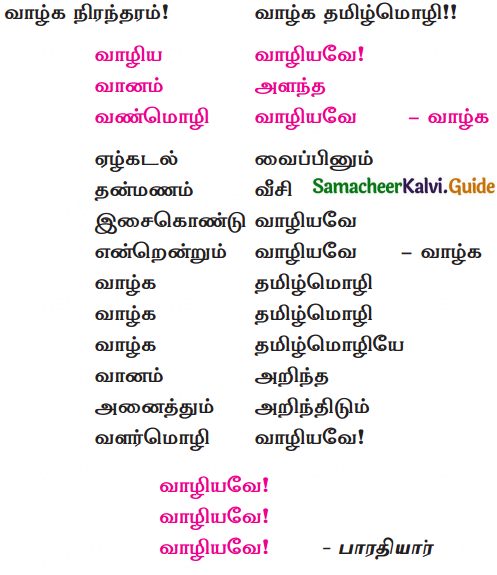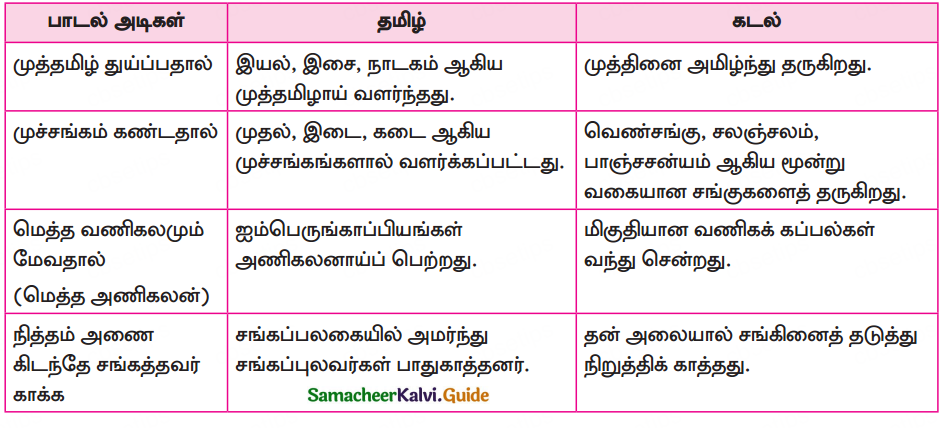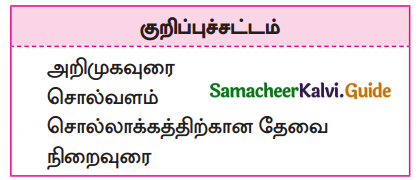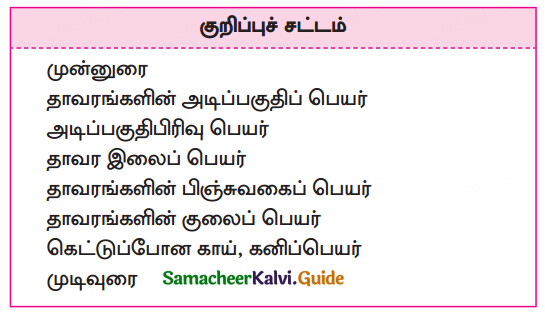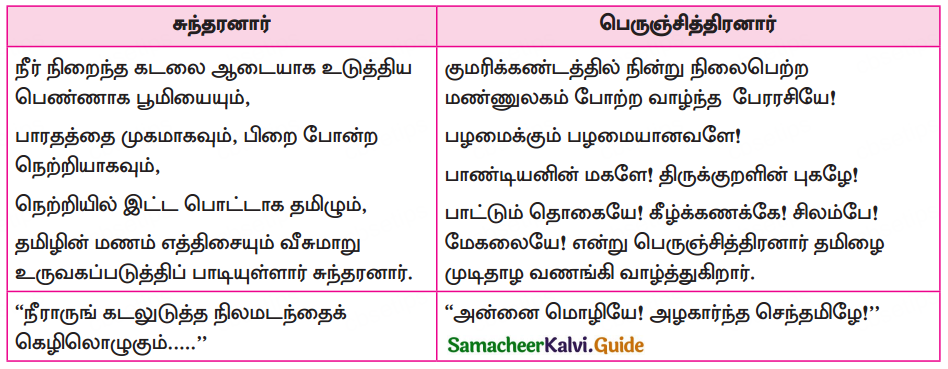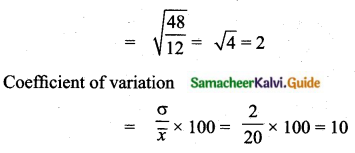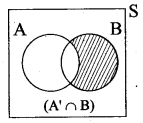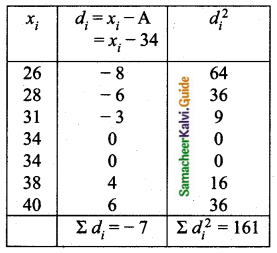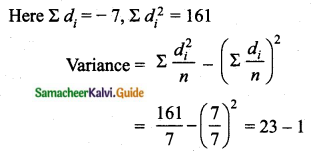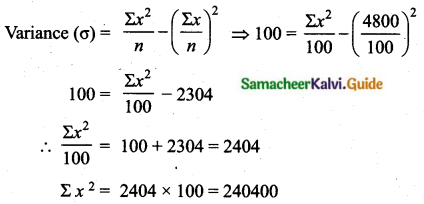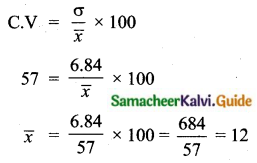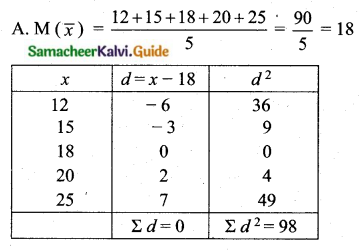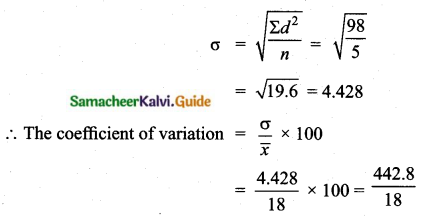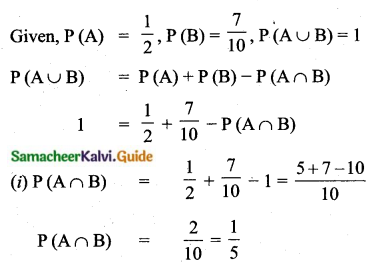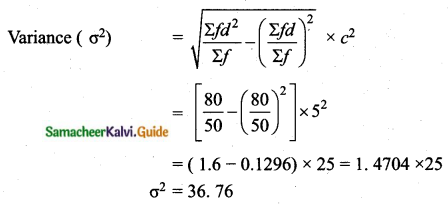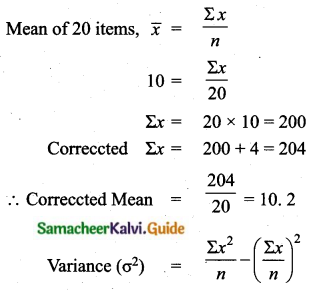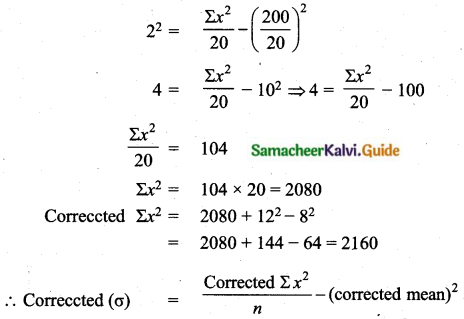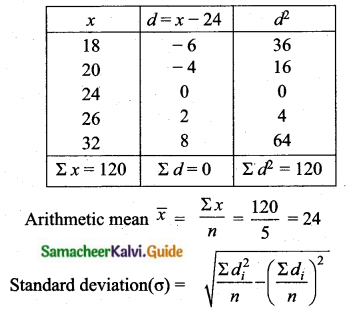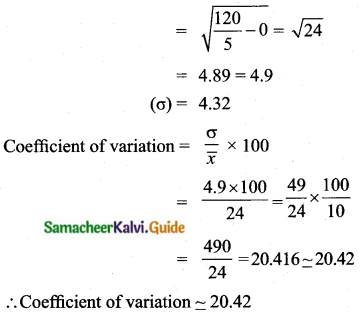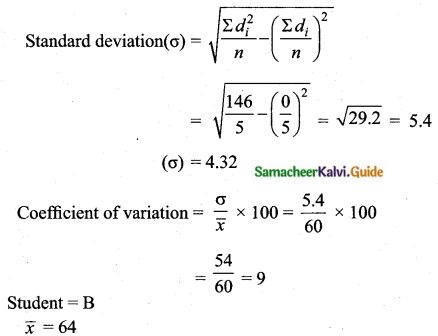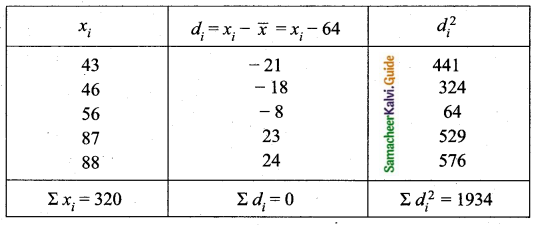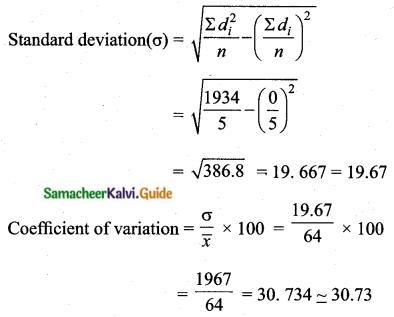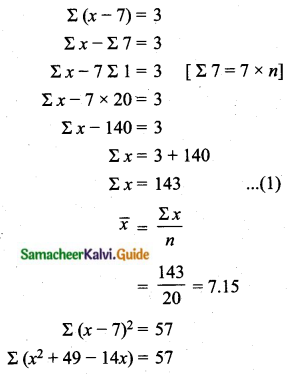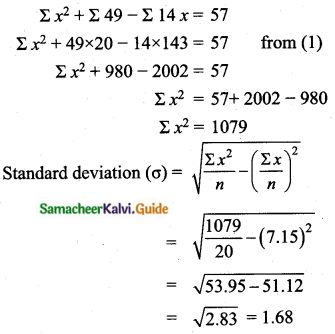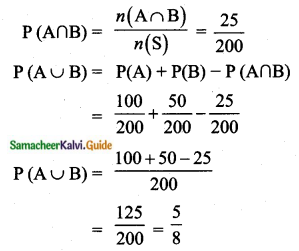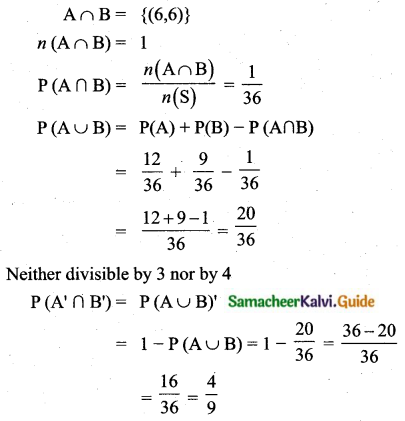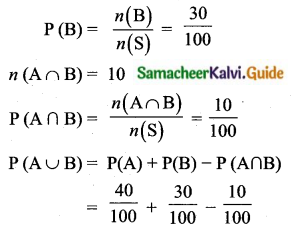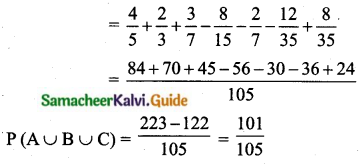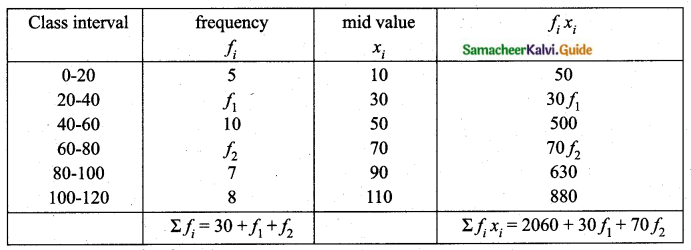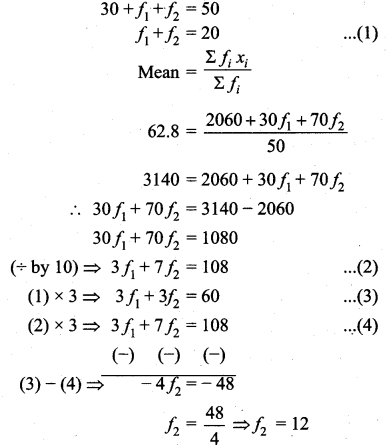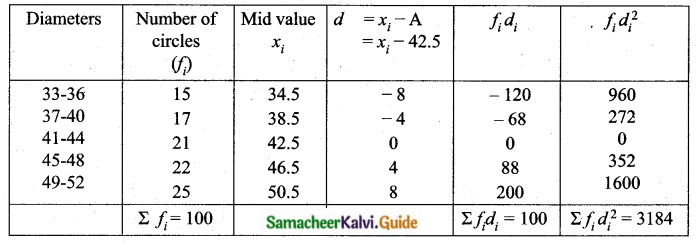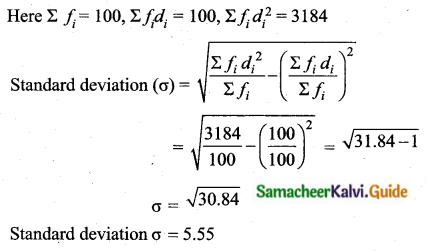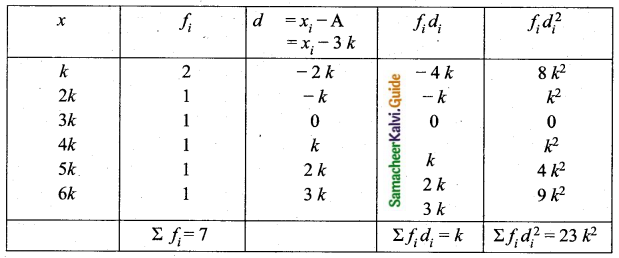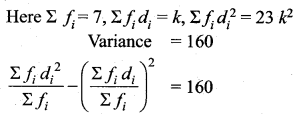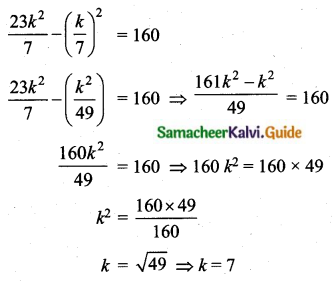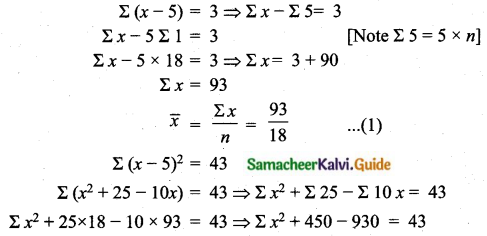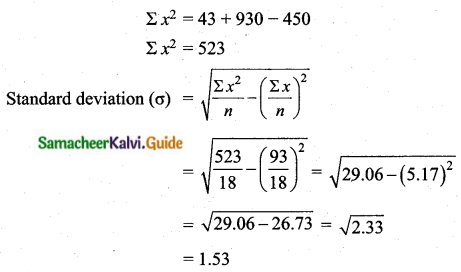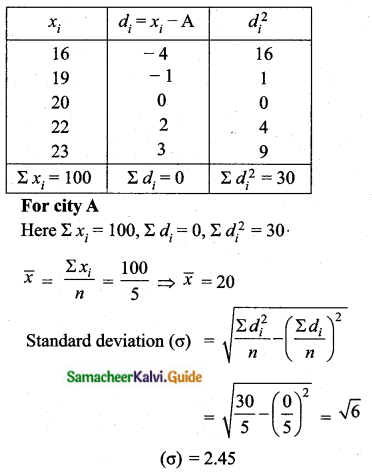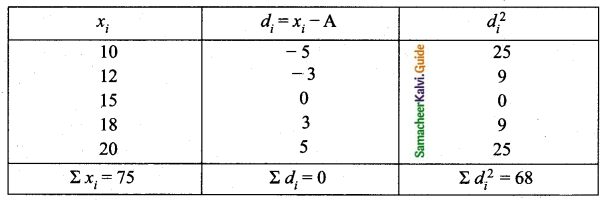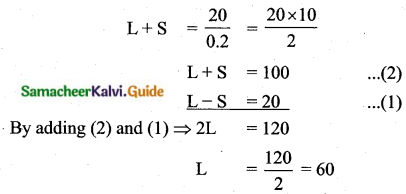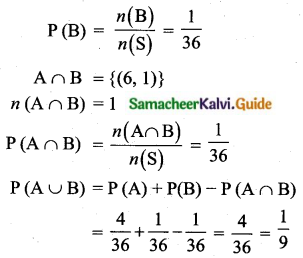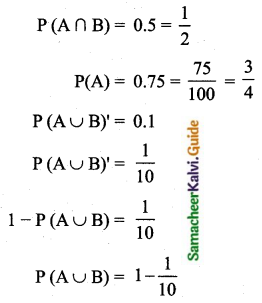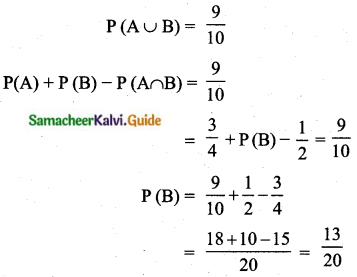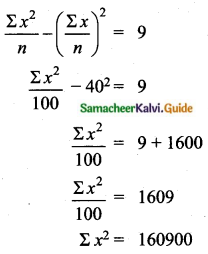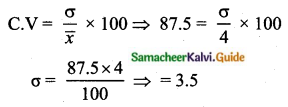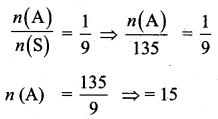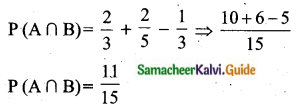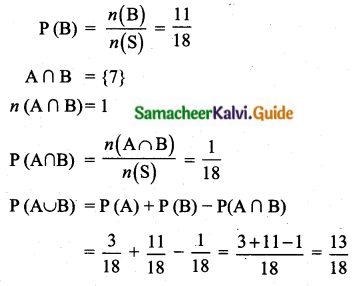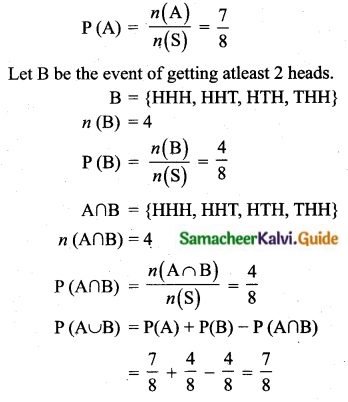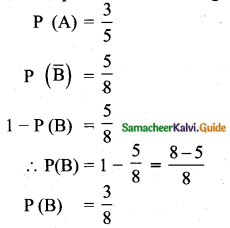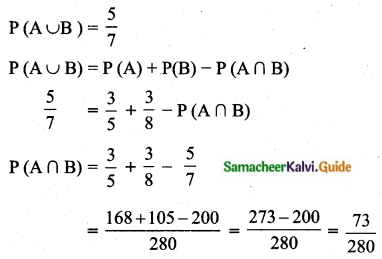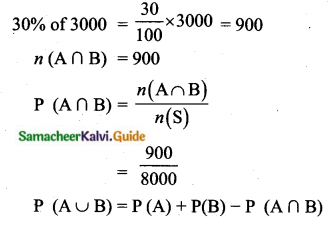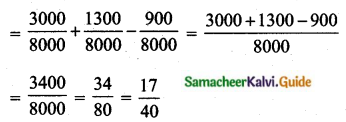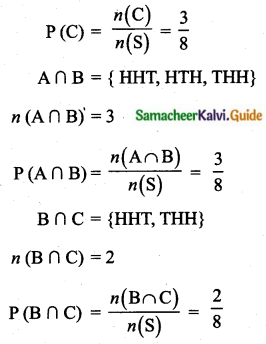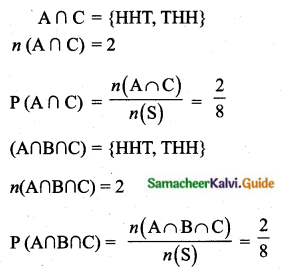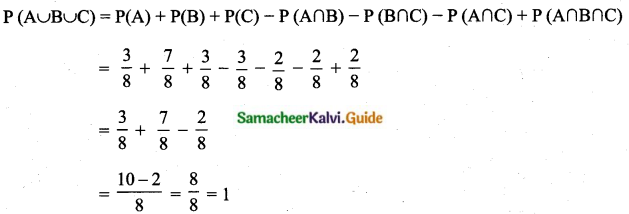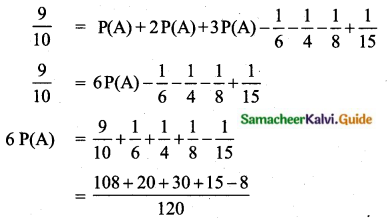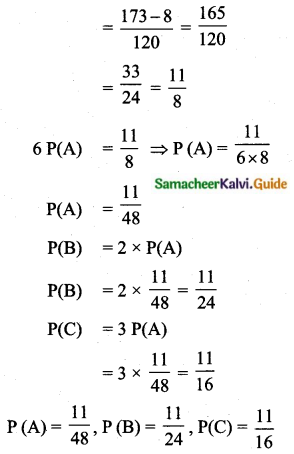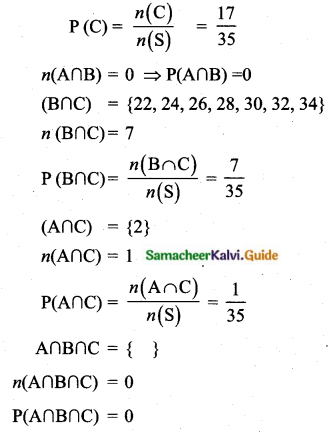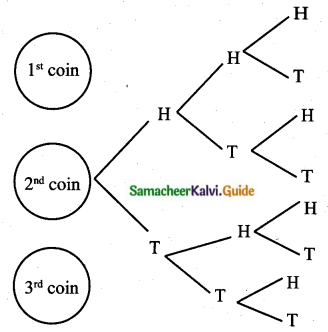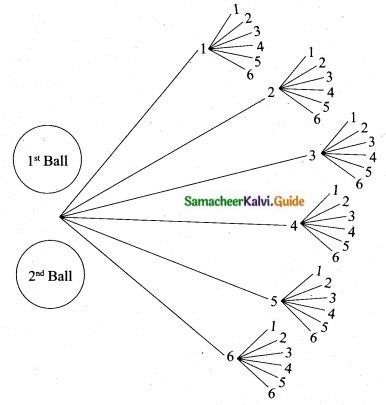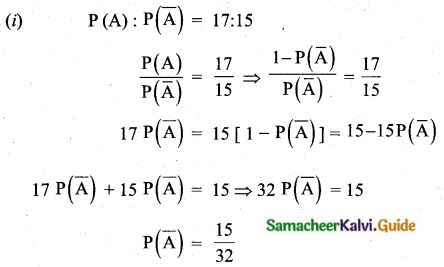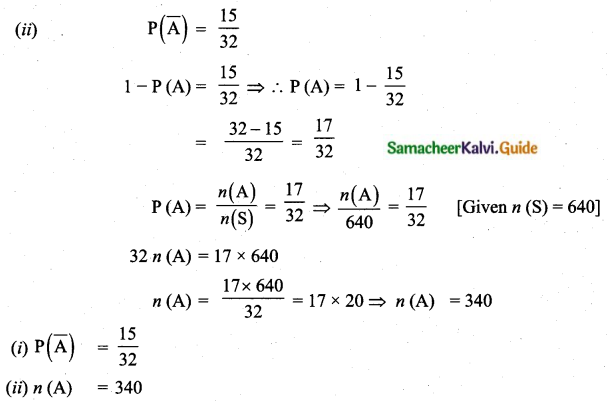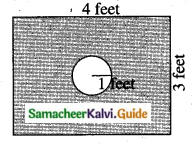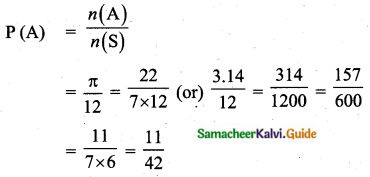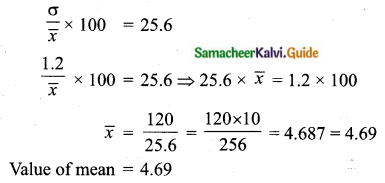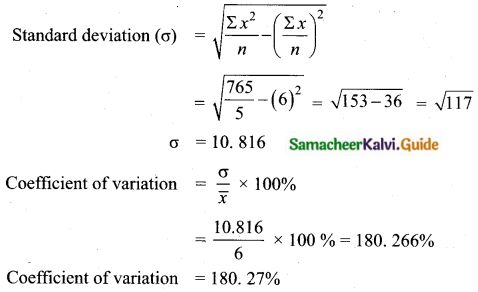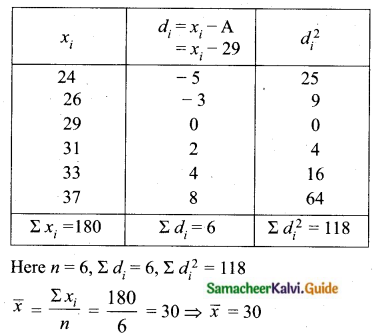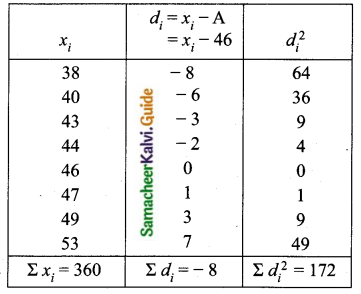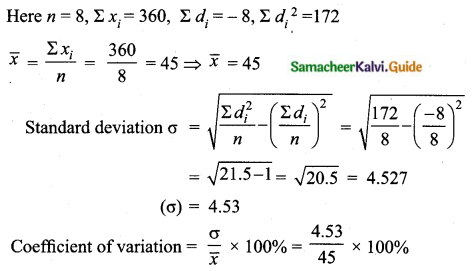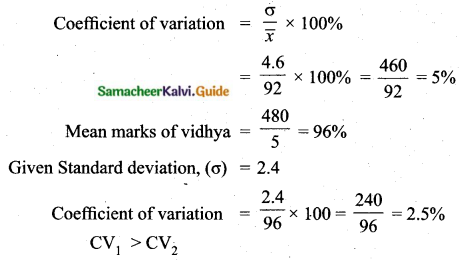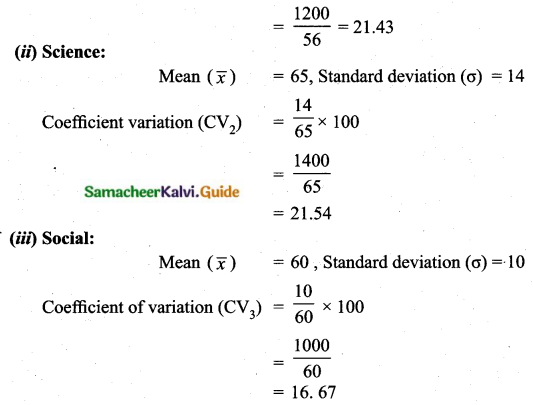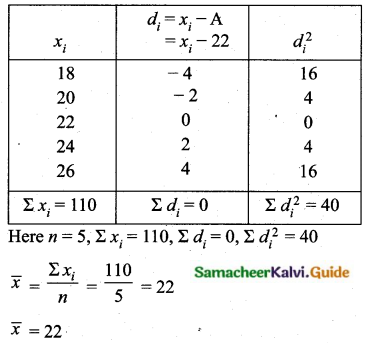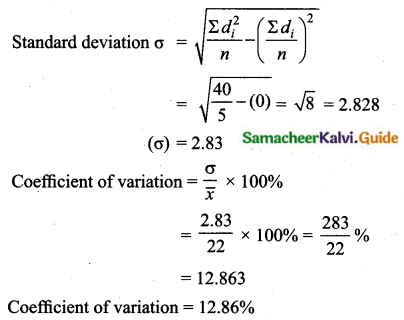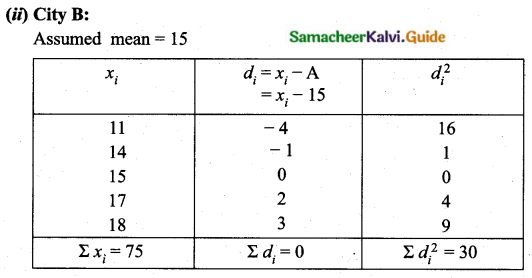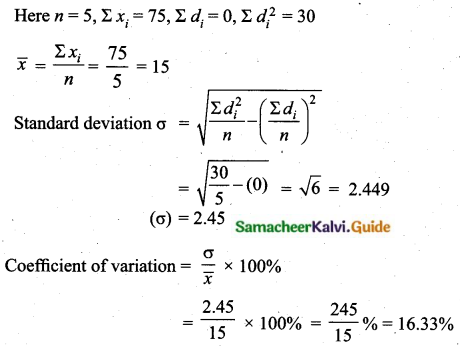Students can Download 10th Tamil Chapter 1.4 உரைநடையின் அணிநலன்கள் Questions and Answers, Summary, Notes, Samacheer Kalvi 10th Tamil Guide Pdf helps you to revise the complete Tamilnadu State Board New Syllabus, helps students complete homework assignments and to score high marks in board exams.
Tamilnadu Samacheer Kalvi 10th Tamil Solutions Chapter 1.4 உரைநடையின் அணிநலன்கள்
கற்பவை கற்றபின்
Question 1.
நீங்கள் படித்தவற்றுள் நினைவில் நீங்கா இடம் பெற்ற இலக்கியத் தொடர்கள், நயங்களை எழுதுக.
Answer:

![]()
Question 2.
கொடுத்த தலைப்பில் பேசுவோம்.
Answer:
தலைப்பு : நேரம்
தவிர்க்க வேண்டிய சொல் : கடிகாரம்
குறிப்பு : ஒரு நிமிடம் பேச வேண்டும். தமிழ்ச்சொற்களை மட்டும் பயன்படுத்த வேண்டும். ஐந்து வினாடிகளுக்கு மேல் இடைவெளி இருத்தல் கூடாது.
இது போன்று வேறு வேறு தலைப்புகளில் வகுப்பறையில் பேசிப் பழகுக.

Answer:
என்பர் தமிழ்ச் சான்றோர். காலம் நமக்காக காத்திருப்பதில்லை. நான் செலவழித்த மணித்துளிகள் மீண்டும் கிடைப்பதில்லை. குறித்த நேரத்தில் குறித்த செயலைச் செய்பவன் பிறரால் மதிக்கப்படத் தக்கவன். காந்தியடிகளிடம் காணப்படும் சிறந்த பண்புகளில் ஒன்று காலம் தவறாமை. குறித்த நேரத்தில் குறித்த செயலைச் செய்வதற்காகவே காந்தியடிகள் தன் இடையில் (இடுப்பு) எப்பொழுதும் நேர
காலம் தவறாமையைக் கடைபிடிப்பீர்!
காலத்தை வீண் செய்யாதீர்!!
காலம் நம்மை வாழ்த்தும்.
![]()
பாடநூல் வினாக்கள்
நெடுவினா
Question 1.
ஒரு பக்க அளவில் உரையாடல் எழுதுக.
Answer:
சூழல் – வெளிநாட்டிலிருந்து உங்கள் இல்லத்திற்கு வந்திருக்கும் உறவினரின் மகளுக்குத் தமிழ் மொழியைப் பேச மட்டுமே தெரியும். ஆங்கில இலக்கியம் படித்த அவரிடம் தமிழ் உரைநடையின் சிறப்புப் பற்றி உரையாடுதல்.
பங்குபெறுவோர் – தமிழன், உறவினர் மகள்
உறவினர் மகள் : வணக்கம் ஐயா.
தமிழன் : வணக்கம்
உறவினர் மகள் : உரையாடல், உரைநடை என்றால் என்ன?
தமிழன் : நீயும் நானும் பேசினால் உரையாடல். அதையே எழுதினால் உரைநடை.
உறவினர் மகள் : உரைநடை வளர்ச்சி பற்றி உங்கள் கருத்து யாது?
தமிழன் : உரைநடையில் எதுகை மோனை போன்ற அணிகளோ இல்லை. ஆனால்
அடுக்கு மொழிகள் உண்டு. கவிதையானது செயற்கைத் தன்மை கொண்டது.
உரைநடையோ இயல்பான ஒழுங்கில் அமையும்.
![]()
உறவினர் மகள் : தமிழ் உரைநடையின் வேறு வகைகள் உண்டா ?
தமிழன் : உண்டு. பொதுவாக உரைநடையினை ஆறு பிரிவுகளாகப் பிரிக்கலாம். விளக்க உரைநடை, அளவை உரைநடை, எடுத்துரை உரைநடை, வருணனை உரைநடை, நாடக உரைநடை, சிந்தனை உரைநடை.
உறவினர் மகள் : எனக்கு வருணனை உரைநடையைப் பற்றி கூற முடியுமா?
தமிழன்
கூறுகிறேன். வருணனை உரைநடை என்பது புலனுணர்வு அனுபவங்களை வருணனையாக விவரிப்பது. மக்கள், உயிரினங்கள், பொருள்கள் ஆகியவற்றை
வருணிப்பது.
உறவினர் மகள் : உரைநடையில் ஓசை இன்பம் ஏற்படுமா?
தமிழன் : எதுகை, மோனைச் சொற்களை மிகுதியாகப் பயன்படுத்தி உரையாசிரியர்கள் பலர் உரையெழுதி உள்ளனர். எடுத்துக்காட்டாக இரா. பி. சேதுபிள்ளையின் தமிழின்பம் என்னும் நூலைக் கூறலாம்.
உறவினர் மகள் : உரைநடையில் இலக்கிய உத்திகள் உண்டா ?
தமிழன் : உண்டு. மு.வ. உரைநடையில் உவமை, எதுகை, மோனை சொல்லாட்சி போன்ற நான்கு உலக உத்திகளைக் கையாண்டுள்ளார்.
உறவினர் மகள் : உரைநடையில் மோனை நயம் உள்ளதா?
தமிழன் : உள்ளது. சான்றாக, இரா.பி. சேதுபிள்ளையின் ‘தமிழ் விருந்து’ என்னும் நூலில் ‘கலையும் கற்பனையும்’ என்ற தலைப்பில் அமைந்த கட்டுரையில்,
‘மலையிலே மழை பொழிந்து வெள்ளம் பொங்கி எழுகின்றது.
அருவியாய் விழுந்து ஆறாய் பாய்கிறது’ என்பதை அறிய முடிகிறது.
உறவினர் மகள் : மோனையும், இயைபும் வருவதுபோல் உரைநடை சொல்லுங்கள் ஐயா!
தமிழன் : சொல்கிறேன். இரா.பி.சேதுபிள்ளையின் ‘உமறுப்புலவர்’ எனும் கட்டுரையில், பாண்டிய நாட்டில் பருவமழை பெய்யாது ஒழிந்தது, பஞ்சம் வந்தது, பசி நோயும் மிகுந்தது.
உறவினர் மகள் : ஐயா கடைசியாக, முரண் நயம் பற்றி மட்டும் கூறுங்கள் ஐயா!
தமிழன் : முரண் என்பது முரண்பட்ட இரண்டுச் சொற்கள் அருகருகே அடுக்கி வருதல். இரா.பி.சேதுபிள்ளையின் ‘ஊரும் பேரும்’ என்னும் நூலில், வாழ்வும் தாழ்வும் நாடு நகரங்களும் உண்டு. சீரும் சிறப்பும் உற்று விளங்கிய சில நகரங்கள் இக்காலத்தில் புகைபடிந்த ஓவியங்கள் போல் பொலிவிழந்து உள்ளது.
உறவினர் மகள் : மிக்க நன்றி ஐயா. தங்களிடமிருந்து உரைநடையின் சிறப்பினை நன்கு அறிந்து கொண்டேன்.
தமிழன் : வணக்கம்!
![]()
கூடுதல் வினாக்கள்
பலவுள் தெரிக
Question 1.
முதல் தமிழ்க்கணினி உருவாக்கப்பட்ட ஆண்டு
அ) 1983
ஆ) 1938
இ) 1893
ஈ) 1980
Answer:
அ) 1983
Question 2.
முதல் தமிழ்க் கணினிக்குச் சூட்டப்பட்ட பெயர்
அ) திருவள்ளுவர்
ஆ) தொல்காப்பியர்
இ) அகத்தியர்
ஈ) கம்ப ர்
Answer:
அ) திருவள்ளுவர்
![]()
Question 3.
புதிய உரைநடை என்னும் நூலினை எழுதியவர்
அ) க. அப்பாதுரை
ஆ) எழில் முதல்வன்
இ) பாவாணர்
ஈ) இளங்குமரனார்
Answer:
ஆ) எழில் முதல்வன்
Question 4.
எழில் முதல்வனின் இயற்பெயர்
அ) மா. இராமலிங்கம்
ஆ) க. அப்பாதுரை
இ) பாவாணர்
ஈ) இளங்குமரனார்
Answer:
அ) மா. இராமலிங்கம்
Question 5.
எழில் முதல்வனின் சாகித்திய அகாதெமி பரிசு பெற்ற நூல்
அ) புதிய உரைநடை
ஆ) இனிக்கும் நினைவுகள்
இ) யாதுமாகி நின்றாய்
ஈ) எங்கெங்கு காணினும்
Answer:
அ) புதிய உரைநடை
![]()
Question 6.
எழில் முதல்வன் கற்றல் கற்பித்தல் பணியை மேற்கொண்ட கல்லூரி
அ) புதுக்கல்லூரி
ஆ) மாநிலக் கல்லூரி
இ) இராணி மேரிக்கல்லூரி
ஈ) குடந்தை அரசு ஆடவர் கல்லூரி
Answer:
ஆ) மாநிலக் கல்லூரி
Question 7.
சங்கப் புலவரிடம் இணையத் தமிழன் எவ்விலக்கியங்களைக் குறித்து உரையாடிக் கொண்டிருந்தான்?
அ) சங்க இலக்கியம்
ஆ) பக்தி இலக்கியம்
இ) உரைநடை இலக்கியம்
ஈ) சிற்றிலக்கியம்
Answer:
இ) உரைநடை இலக்கியம்
![]()
Question 8.
“உவமையும் பொருளும் வேற்றுமை ஒழிவித்து ஒன்றென மாட்டின் அது உருவகமாகும்” – என்றவர்
அ) தொல்காப்பியர்
ஆ) பவணத்தியார்
இ) தண்டி
ஈ) அகத்தியர்
Answer:
இ) தண்டி
Question 9.
“இயற்கை பதித்து வைத்த இரண்டு பெரிய நிலைக் கண்ணாடிகளைப் போல் வடபுறமும் தென்புறமும் நீர் நிறைந்த கண்மாய்கள்” என்று குறிஞ்சிமலர் நூலில் நா. பார்த்தசாரதி பயன்படுத்திய நயம்
அ) உவமை
ஆ) உருவகம்
இ) எடுத்துக்காட்டு உவமையணி
ஈ) சிற்றிலக்கியம்
Answer:
அ) உவமை
![]()
Question 10.
எடுத்துக்காட்டு உவமையணியை உரைநடையில் பயன்படுத்துகையில் அதனை எப்படி அழைப்பர்?
அ) இலக்கணை
ஆ) இணை ஒப்பு
இ) முரண்படு மெய்ம்மை
ஈ) சொல்முரண்
Answer:
ஆ) இணை ஒப்பு
Question 11.
குடிசையின் ஒருபக்கம் கோபுரங்கள் மறுபக்கம்; பசித்த வயிறுகள் ஒரு பக்கம் புளிச் சேப்பக்காரர்கள் மறுபக்கம்; மெலிந்த எலும்புக் கூடுகள் ஒருபக்கம் பருத்த தொந்திகள் மறுபக்கம் – தோழர் ப. ஜீவானந்தம் உரைநடை எதற்கு எடுத்துக்காட்டு?
அ) எதிரிணை இயைபு
ஆ) முரண்படு மெய்ம்மை
இ) இலக்கணை
ஈ) சொல்முரண்
Answer:
அ) எதிரிணை இயைபு
![]()
Question 12.
உணர்வுகளைத் தூண்டி எழுப்புவதில் வெற்றிபெறுவன?
Answer:
அ) உவமையை விட உருவகமே
ஆ) உருவகத்தை விட உவமையே
இ) எதுகையை விட மோனையே
ஈ) கேள்வியிலே பதில் இருப்பது போல
Answer:
அ) உவமையை விட உருவகமே
நெடுவினா
Question 1.
உணர்ச்சிகளைக் காட்ட உவமை கொண்ட மொழிநடையே ஏற்ற கருவி என்பதை நிறுவுக.
Answer:
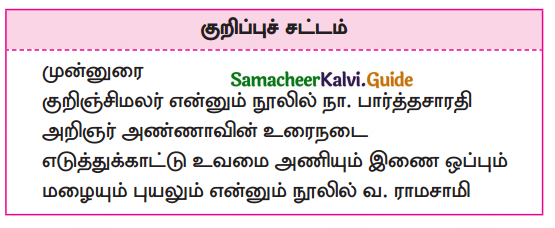
முன்னுரை:
உணர்ச்சிகளைக் காட்ட உவமை கொண்ட மொழிநடையே ஏற்ற கருவியாக விளங்குவதால் தற்காலத்திலும் இதனைப் பயன்படுத்துவதைப் பல இலக்கியங்களில் காண முடிகிறது.
குறிஞ்சிமலர் என்னும் நூலில் நா. பார்த்தசாரதி:
‘திருப்பரங்குன்றத்தின் அழகைப் பார்ப்பதற்கென்றே இயற்கை பதித்து வைத்த இரண்டு பெரிய நிலைக் கண்ணாடிகளைப் போல் வடபுறமும் தென்புறமும் நீர் நிறைந்த கண்மாய்கள்’ என்று, ‘குறிஞ்சி மலர்’ என்னும் நூலில் நா. பார்த்தசாரதி உவமையைப் பயன்படுத்தியுள்ளார்.
இக்கால இலக்கியங்களில் உவமையை விட உருவகமே உணர்வுகளைத் தூண்டி எழுப்புவதில் வெற்றி பெறுகின்றது. முகநிலவில் வியர்வை முத்துகள் துளிர்த்தன’ என்று உருவகமாக எழுதுகிறார்கள்.
![]()
அறிஞர் அண்ணாவின் உரைநடை:
‘களம்புகத் துடித்து நின்ற உனக்கு, வெற்றிச்சாறு கிடைத்துவிட்டது, உண்டு மகிழ்ந்தாய் உன் புன்னகை தான் அதற்குச் சான்று’ என்பது இக்காலத்தில் வாழ்ந்த அறிஞர் அண்ணாவின் உரைநடை ஆகும்.
எடுத்துக்காட்டு உவமை அணியும் இணை ஒப்பும்:
“புறந்தூய்மை நீரான் அமையும் அகந்தூய்மை வாய்மையால் காணப் படும்”
என்னும் குறட்பாவில் உவம உருபு மறைந்து வருவதால் எடுத்துக்காட்டு உவமையணி என்பர். இவ்வணியை உரைநடையில் பயன்படுத்துகையில் இணை ஒப்பு’ என்று கூறுவர்.
மழையும் புயலும் என்னும் நூலில் வ. ராமசாமி:
‘ஊர் கூடிச் செக்குத் தள்ள முடியுமா? என்று கேட்கிறார்கள். ஊர் கூடின பிறகு தான் செக்குத் தள்ள வேண்டும் என்று காத்திருப்பவர்களின் காரியம் கை கூடாது, புரோகிதருக்காக அமாவாசை காத்திருப்பதில்லை ‘ என்று எழுத்தாளர் வ. ராமசாமி ‘மழையும் புயலும்’ என்னும் நூலில் குறிப்பிட்டுள்ளார்.
முடிவுரை:
ஒன்றை விளக்குவதற்கு அதனோடு தொடர்புடைய பிறிதொன்றைக் கூறி விளக்குவதே உவமை என்பர். அந்த வகையில் அக்காலத்தில் செய்யுள்களில் பயன்படுத்தப்பட்ட உவமை, இக்காலத்தில் உரைநடையிலும் பெருமளவில் பயன்படுத்தப்படுகிறது. இது உணர்ச்சிகளைக் காட்ட ஏற்ற கருவியாகவும் விளங்குகிறது.
![]()
Question 2.
பின்வரும் குறிப்புகளைக் கொண்டு கட்டுரை வடிவில் விடை தருக.
சங்கப் பாடல்களுக்குப் பின் தோன்றிய இலக்கிய வடிவங்கள் – இலக்கியங்களின் கற்பனையும் இலக்கணையும் – மோனையும் எதுகையும் – சொற்களின் அளவும் அழகும் – முரண்பாடு மெய்ம்மையும், எதிரிணை இசைவும் – கேள்விலேயே பதில் – சொல்லையும் கருத்தையும் வைக்கும் முறை.
Answer:
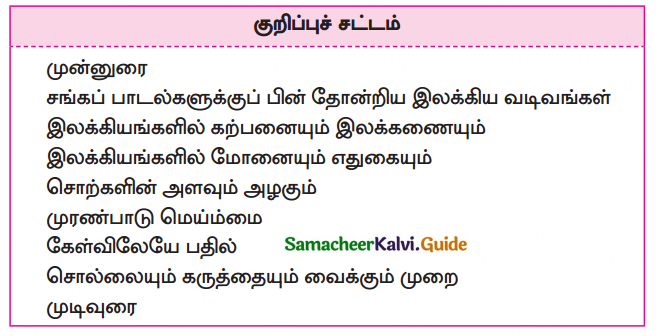
முன்னுரை:
சங்க இலக்கியம் நம் பாட்டனார் தோப்பாகவும், இடைக்கால இலக்கியம் நம் தந்தையார் தோட்டமாகவும், இக்கால இலக்கியம் நம் பூங்காவாகவும் விளங்குகிறது. தோப்பு ஈந்த பயன்களையும் தோட்டம் தந்த நயங்களையும் பூங்காவின் அழகினையும் ஒன்று சேர்த்து உரைநடையின் அணிநலன்களாக அவை விளங்குவதைக் காண்போம்.
சங்கப் பாடல்களுக்குப் பின் தோன்றிய இலக்கிய வடிவங்கள்:
சங்கப் பாடல்களுக்குப் பின், தமிழ் இலக்கியம் அற இலக்கியங்களாகி, காப்பியங்களாகி, சிற்றிலக்கியங்களாகி, சந்தக் கவிதைகளாகி, புதுக்கவிதைகளாகி, இன்றைய நிலையில் நவீன கவிதைகளில் வந்து நிற்கிறது. உரைநடையின் வளர்ச்சியில் சிறுகதை, கட்டுரை, புதினம் என்ற வடிவங்கள் உருவாகியுள்ளன.
இலக்கியங்களில் கற்பனையும் இலக்கணையும்:
அஃறிணைப் பொருள்களையும் உயர்திணையாகக் கருதிக் கற்பனை செய்து எழுதுவது இலக்கணத்தில் உண்டு. தொல்காப்பியர், ‘ஞாயிறு, திங்கள், நெஞ்சம் போன்ற அஃறிணைப் பொருள்கள். சொல்லுந போலவும், கேட்குந போலவும் சொல்லியாங்கு அமையும்’ (செய்யுளியல், 192) என்று எழுதும் திறத்தைக் குறிப்பிட்டிருக்கிறார். உயிர் இல்லாத பொருட்களை உயிர் உள்ளன போலவும், உணர்வு இல்லாத பொருள்களை உணர்வுடையன போலவும் கற்பனை செய்வதுண்டு என்று எடுத்துக்காட்டியிருக்கிறார். இதனை உரைநடையில் இலக்கணை’ என்று கூறுவர்.
சான்று:
“சோலையில் புகுவேன்; மரங்கள் கூப்பிடும்: விழுந்து வைக்கும், ஆலமரநிழலில் அமர்வேன்’, ஆல், என் விழுதைப் பார். அந்த அரசுக்கு இஃது உண்டா ? என்னும். அரசு கண்ணிற்படும். ‘யான் விழுதின்றி வானுற ஓங்கி நிற்கிறேன், என்னை மக்கள் சுற்றிச் செல்கிறார்கள், காண்’ என்னும். வேம்பு என் நிழல் நலஞ்செய்யும். என் பூவின் குணங்களைச் சொல்கிறேன் வா’ என்னும். அத்தி, நாகை, விளா, மா, வில்வம் முதலிய மரங்கள் விளியாமலிருக்குமோ? சிந்தனையில் அவைகளின் நுட்பங்கள் விளங்கும். மலை என்னை அடிக்கடி அழைக்கும். மலைமீது இவர்வேன் ஒரிடத்தில் அமர்வேன் மேலும் கீழும் பார்ப்பேன் சுற்றுமுற்றும் பார்ப்பேன். மனம் அமைதி எய்தும்.
என்ற தமிழ்த்தென்றல் திரு.வி. கல்யாண சுந்தரனாரின் எழுத்துகள் அஃறிணைப் பொருள்களை உயர்திணையாகக் கருதி எழுதப்பட்டிருப்பதற்குச் சான்றாகிறது.
இலக்கியங்களில் மோனையும் எதுகையும்.
மோனையும் எதுகையும் செய்யுளில் வருமாயின் இனிய ஓசையின்பம் விளையும். இவற்றினை உரைநடையிலும் பயன்படுத்துவர்.
‘சான்றாக, ‘தென்றல் அசைந்துவரும் தென்தமிழ் நாட்டில் அமைந்த திருக்குற்றாலம், மலைவளம் படைத்த பழம்பதியாகும். அம்மலையிலே, கோங்கும் வேங்கையும் ஓங்கி வளரும் குரவமும் முல்லையும் நறுமணங் கமழும்! கோலமாமயில் தோகை விரித்தாடும்; தேனுண்ட வண்டுகள் தமிழ்ப் பாட்டிசைக்கும்; இத்தகைய மலையினின்று விரைந்து வழித்திறங்கும் வெள்ளருவி வட்டச் சாலையிலே வீழ்ந்து பொங்கும் பொழுது சிதறும் நீர்த்திவலைகள் பாலாவியோற் பரந்தெழுந்து மஞ்சினோடு சேர்ந்து கொஞ்சிக் குலாவும்’ என்று சொல்லின் செல்வர் இரா.பி. சே. தமிழன்பம் என்னும் நூலில் எழுதியுள்ளமையைக் கூறலாம்.
சொற்களின் அளவும் அழகும்:
வெளிப்பாட்டிற்கும் சொல்லப்படும் கருத்திற்கு அழுத்தம் தரவும் உரைநடையில் சொல்லையோ கருத்தையோ திரும்பத்திரும்பச் சொல்வதுண்டு. சொற்களை அளவாகப் பயன்படுத்தி உரைநடையை அழகு செய்ய மு. வரதராசனார், தம் நாட்டுப்பற்று என்னும் கட்டுரைத் தொகுப்பில், ‘வாழ்க்கை நடத்துவதற்குப் பொருள்கள் பல வேண்டும். அரிசி, காய், கனி முதலியவை வேண்டும். உடை, வீடு முதலியவை வேண்டும். காசும் காகித நோட்டும் வேண்டும், இன்னும் பல வேண்டும். இவற்றை ஆளும் அறிவும் வேண்டும்’ என்று எழுதியிருக்கிறார்.
முரண்பாடு மெய்ம்மை:
படிப்பவருக்கு முரண்படுவது போல இருப்பினும் உண்மையில் முரண்படாத – மெய்ம்மையைச் சொல்லுவது முரண்பாடு மெய்ம்மை’ ஆகும்.
![]()
சான்று:
‘இந்த உலகத்தில் பயம் என்ற ஒன்றிற்குத் தவிர வேறு எதற்கு நாம் பயப்பட வேண்டும்?’ சொல்லும் முறையில் அழுத்தம் கொடுப்பதற்காக எதிரும் புதிருமான முரண்படும் கருத்துகளை அமைத்து எழுதுவதை எதிரிணை இசைவு’ என்பர்.
‘குடிசைகள் ஒரு பக்கம்; கோபுரங்கள் மறுபக்கம்; பசித்த வயிறுகள் ஒரு பக்கம்; புளிச்சேப்பக்கார்கள் மறுபக்கம்; மெலிந்த எலும்புக்கூடுகள் ஒரு பக்கம்; பழுத்த தொந்திகள் மறுபக்கம்; கேடு கெட்ட இந்தச் சமுதாயத்திற்கு என்றைக்கு விமோசனம்? தோழர்களே, சிந்தியுங்கள்! என்று தோழர் ப. ஜீவானந்தம் எழுதியிருப்பது இதற்கு எடுத்துக்காட்டாக அமைகிறது.
கேள்விலேயே பதில்:
விடைத்தர வேண்டிய தேவை இல்லாமல் கேள்விலேயே பதில் இருப்பதைப் போலவும் எழுதுவது உணர்ச்சி வெளிப்பாட்டுக்கு உதவக் கூடியதாக இருக்கிறது. சான்றாக, ‘அவர் (பெரியார் ஈ. வெ. ரா) பேசாத நாள் உண்டா ? குரல் கேட்காத ஊர் உண்டா ? அவரிடம் சிக்கித் திணறாத பழமை உண்டா ? எதைக் கண்டு அவர் திகைத்தார்? எந்தப் புராணம் அவரிடம் தாக்குதலைப் பெறாதது? …….. எனவே தான் பெரியாருடைய பெரும் பணியை நான் ஒரு தனி மனிதனின் வரலாறு என்றல்ல ஒரு சகாப்தம். ஒரு கால கட்டம்- ஒரு திருப்பம் – என்று கூறுகிறேன்’ என்னும் பெரியாரைப் பற்றிய அறிஞர் அண்ணாவின் கூற்றினைக் கூறலாம்.
![]()
சொல்லையும் கருத்தையும் வைக்கும் முறை:
உரைநடையில் சொல்லையோ கருத்தையோ அடுத்தடுத்து வைக்கும் முறையிலே உள்ள சிறப்பினை உச்சநிலை’ என்பர்.
‘இந்தியா தான் என்னுடைய மோட்சம்! இந்தியாவின் நன்மைதான் என் நன்மை. இந்தியா தான் என் இளமையின் மெத்தை என் யௌவனத்தின் நந்த வனம் என் கிழக்காலத்தின் காசி’ என்று பாரதி என்னும் தமிழ்க்கவிஞர் நம் நாட்டை உயர்த்திக் கூறுவதைச் சான்றாகக் கூறலாம்.
முடிவுரை:
ஈராயிரம் ஆண்டுகட்கு மேலாக எல்லா வளத்துடனும் காலமாற்றத்திற்கு ஏற்றவாறு தகவமைத்துக் கொள்கின்ற நம் தாய்மொழியாகிய தமிழ், தற்கால உரைநடை வடிவத்திலும் மிகுந்த செழுமையுடன் விளங்குவதை அறிய முடிகிறது.ம் பார்க்கும் கருவியைத் தொங்கவிட்டிருப்பார்.
